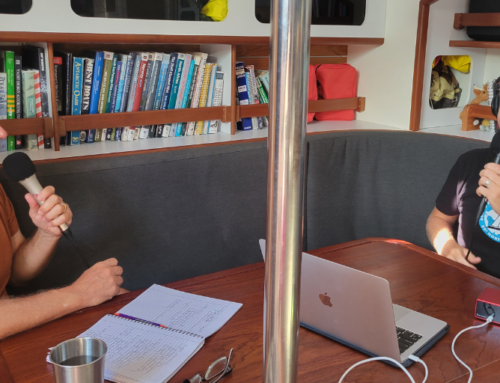A few years ago, I was at a conference and just as the keynote speaker started to speak, there was a problem with the projection system and his PowerPoint presentation failed to show on the screen.
How did the speaker react to this logistical problem? He panicked.
He became extremely flustered and was clearly lost without the slide deck. After about 10 minutes of nervous small talk and hoping and praying the projector would get fixed, it finally came on and he began his presentation.
I felt cheated by his lack of preparation.
No professional goes on stage without either a) knowing your presentation so well you can deliver it without prompts or b) placing a paper version of your slides on the lectern before you get up to speak as a backup.
Room Goes Dark
About 12 years ago, I gave a paid presentation in front of a large group of financial advisors using a slide deck. Midway through the presentation, the electricity in the room went out. Poof, my visual aid was gone.
But rather than wait until the power came back on (it didn’t until after I finished speaking), I kept on speaking and glanced at the printed slide deck I had strategically placed on the lectern before I got up to speak. It went so well, the same company hired me to speak the following year.
What I’ve just described is what I would call second derivative preparation. I prepared for the presentation (first) and I had a backup (second).
Navy SEALs call this “two is one, one is none.”
But I didn’t stop there.
Whenever I speak, I also bring my laptop and have my presentation loaded on it along with the adaptors I may need to fit any projection system. I have a backup to my backup and that’s my third derivative level of preparation for a presentation.
How Prepared Are You?
Having coached financial advisors for 20 years, I’ve seen firsthand how a lack of preparation has led to missed opportunities and lost sales. Often, in our coaching calls, we debrief these missed opportunities and lost sales to determine what could have been done ahead of time to prepare for the “well, that didn’t go as planned,” situation.
Here’s a simple 3-part framework to ensure you are well-prepared for big opportunities that may not go as planned.
1. Prepare for the expected. This is the first level of preparation; do what you normally do and assume the situation will go as planned.
2. Game out the unexpected. Think about the most likely “unexpected” twists that your situation could take and be prepared for those. For example, you’re hosting a webinar and your internet cuts out. What do you do?
3. Turn the unexpected negative into a win. Negative stuff happens, but how you respond to it could turn the negative into a win.
Here’s an example.
Let’s say you’re meeting with an important prospect.
The first level of preparation is to do what you normally do to prep for a prospect meeting.
The second level is to game out the different directions the conversation could go and be prepared to respond to those different directions.
The third derivative level of preparation could be to prepare for a way to help the prospect even if they decide not to engage you as their financial advisor. For example, let’s say the prospect heads up a prominent local foundation. You could say something like, “Peggy, even though you’ve decided to go a different direction with hiring a financial advisor, I have a couple clients that come to mind who have a donor advised fund and might have an interest in supporting your foundation. I’ll check with them and if they are interested, can I connect you with them via email?”
Imagine if the above situation actually happened and you were able to connect a client or two with Peggy’s foundation, even though she didn’t hire you as her advisor. Powerful.
Deep, third derivative level preparation is like homeowner’s insurance. You don’t always need it, but when you do, it’s a lifesaver.





